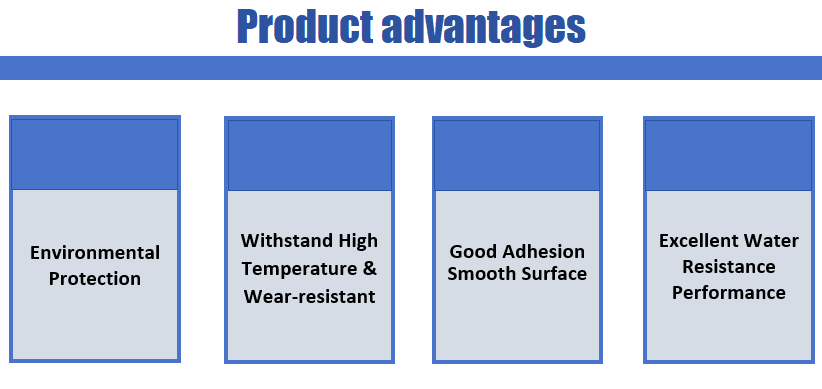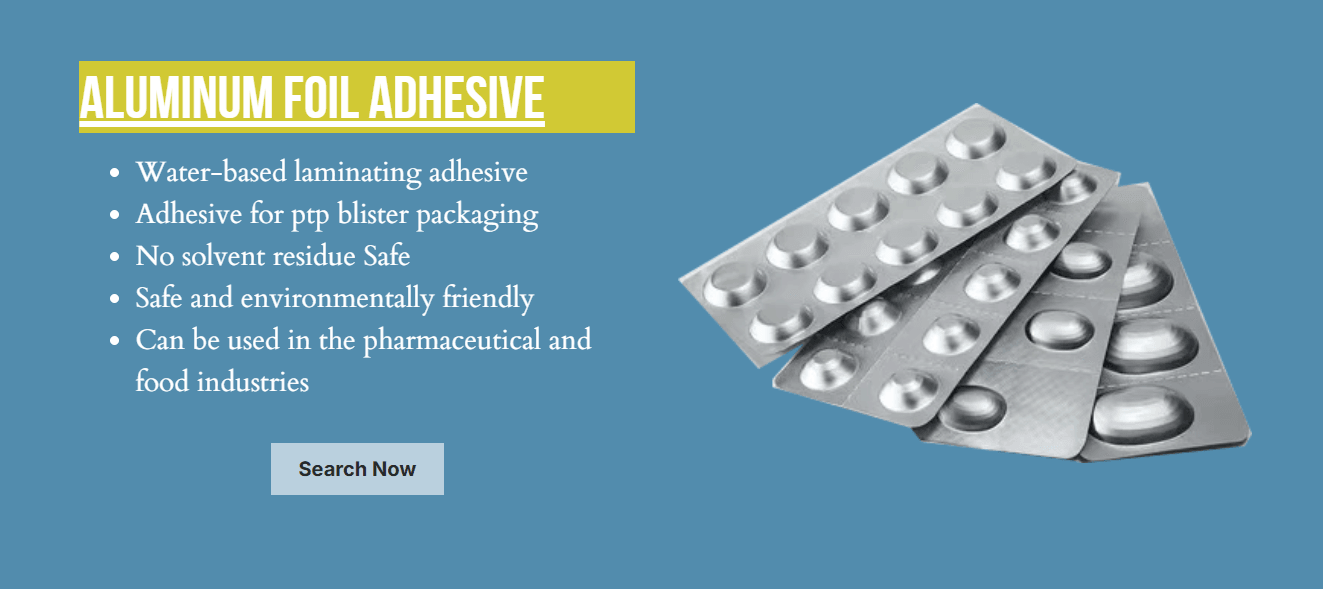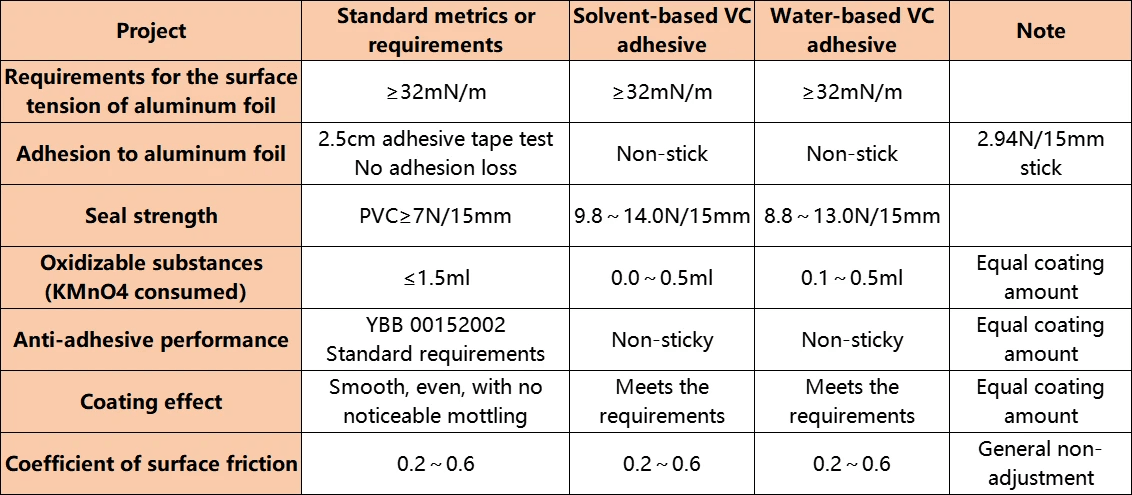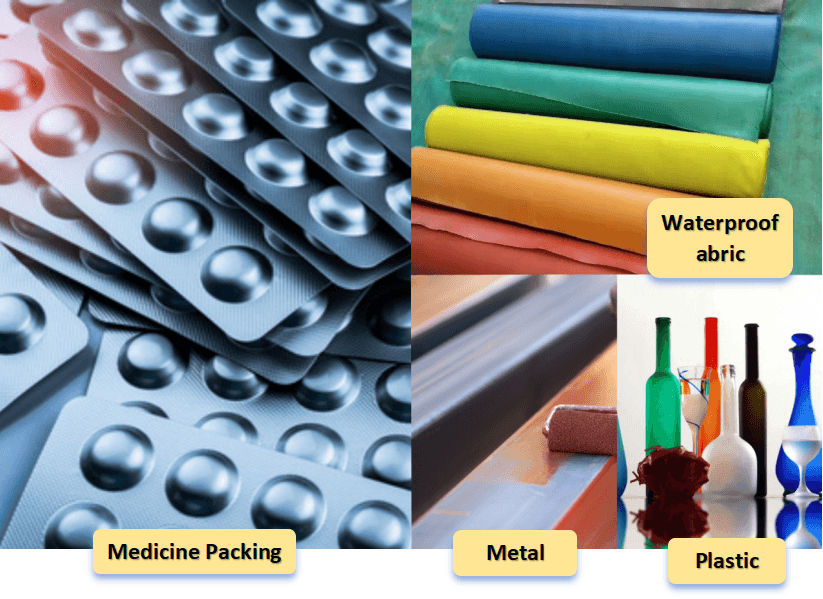Introduction

When it comes to laminate packaging, the adhesive you choose can make or break your project. Understanding the nuances of various adhesives, such as laminate to laminate adhesive, is essential for achieving a durable and professional finish. Whether you're using adhesive back laminating pouches or self-adhesive laminating sheets, knowing how these products work together can elevate your packaging game.
Understanding Adhesive for Laminate Packaging
Adhesives play a crucial role in laminate packaging by providing the necessary bond that holds layers together. Laminate to laminate adhesive is specifically designed to ensure that two laminated surfaces adhere seamlessly without compromising their integrity. By being aware of the different types of adhesives available, you can select the right one for your specific needs and avoid potential pitfalls.
Why the Right Adhesive Matters
Choosing the right adhesive is vital not only for ensuring a strong bond but also for maximizing the quality of your finished product. The effectiveness of adhesive back laminating pouches and self-adhesive laminating sheets hinges on compatibility with your materials and intended use. A poor choice in adhesive can lead to delamination or reduced durability, ultimately affecting both appearance and functionality.
Common Mistakes to Avoid
Many people underestimate the importance of proper adhesion when working with laminates, leading to common mistakes that can be easily avoided. One frequent error is selecting an inappropriate type of laminate to laminate adhesive that doesn't match their project requirements. Additionally, overlooking application techniques—such as ensuring even coating—can result in air bubbles or wrinkles that detract from an otherwise polished look.
Types of Adhesives for Laminate Packaging

When it comes to laminate packaging, understanding the different types of adhesives available is crucial for achieving optimal results. Each type has its own unique properties, benefits, and drawbacks that can significantly influence the quality and durability of the finished product. In this section, we’ll delve into laminate to laminate adhesive, explore the pros and cons of adhesive back laminating pouches, and highlight the benefits of self-adhesive laminating sheets.
Laminate to Laminate Adhesive Explained
Laminate to laminate adhesive is specifically designed for bonding two layers of laminate together. This type of adhesive creates a robust bond that enhances the overall strength and longevity of laminated materials. Often used in industrial applications, this adhesive ensures that both layers adhere seamlessly without compromising clarity or flexibility.
The composition of laminate to laminate adhesive can vary widely; some are solvent-based while others are water-based or hot melt formulations. The choice largely depends on the intended use and environmental considerations. Ultimately, selecting an appropriate laminate to laminate adhesive can make all the difference in achieving a high-quality finish.
In practice, using laminate to laminate adhesive requires careful application techniques to avoid issues like air bubbles or uneven surfaces. When applied correctly, it provides a durable seal that protects against moisture and wear while maintaining aesthetic appeal. Therefore, understanding how this type of adhesive works is essential for anyone involved in packaging design or production.
Pros and Cons of Adhesive Back Laminating Pouches
Adhesive back laminating pouches are popular among crafters and professionals alike due to their convenience and ease of use. These pre-coated pouches come with a sticky backing that allows users to simply insert their document before sealing it shut with heat or pressure. One major advantage is that they eliminate messy liquid adhesives while providing a strong bond between layers.
However, there are also some drawbacks associated with using adhesive back laminating pouches. Additionally, if not applied correctly, these pouches can lead to trapped air bubbles or wrinkles that mar your project’s appearance.
Despite these challenges, many find that the ease-of-use factor outweighs potential pitfalls—especially for smaller projects where speed is essential! By weighing these pros and cons carefully before diving into your next lamination project using adhesive back laminating pouches will help ensure success every time.
Benefits of Self-Adhesive Laminating Sheets
Self-adhesive laminating sheets have gained popularity thanks to their versatility and user-friendly nature. These sheets come ready-to-use with an easy-peel backing that allows users to apply them directly onto documents without needing additional tools or equipment like heat sources or rollers. The convenience factor makes self-adhesive laminating sheets an attractive option for quick projects at home or in professional settings alike!
One significant benefit lies in their ability to provide excellent protection against moisture damage while enhancing visual appeal through added glossiness—perfect for preserving important documents such as photographs or certificates! Furthermore, self-adhesive laminating sheets allow users greater control over application since they can be repositioned until firmly pressed down—a feature absent from many other types of adhesives on the market today.
However tempting these benefits may sound; it's essential not only consider performance but also compatibility with various substrates before committing fully! Ensuring your chosen self-adhesive sheet works harmoniously alongside existing materials will guarantee long-lasting results you’ll be proud showcasing time after time!
Choosing the Right Adhesive

Choosing the right adhesive for laminate packaging can feel like navigating a maze, but don’t worry—this section will help you find your way. The right adhesive not only ensures a strong bond but also enhances the overall quality and durability of your laminated products. With options like laminate to laminate adhesive, adhesive back laminating pouches, and self-adhesive laminating sheets, understanding what fits your needs is key.
Factors to Consider
When selecting an adhesive, several factors come into play that can make or break your project. First and foremost, consider the intended application: are you looking for something quick and easy or a long-lasting solution? Additionally, think about environmental conditions such as temperature and humidity; these can significantly impact how well your laminate to laminate adhesive performs over time.
Another crucial factor is drying time—some adhesives require longer curing periods than others. If you're in a hurry or working on multiple projects simultaneously, opting for self-adhesive laminating sheets might be your best bet as they eliminate wait times entirely. Always weigh these factors against your specific needs to ensure you make an informed choice.
Compatibility with Materials
Not all adhesives play nicely with every material; compatibility is essential for achieving optimal results in laminate packaging. For instance, if you're using adhesive back laminating pouches, ensure that they are suitable for the substrate materials you're working with—whether paper, plastic, or another surface type. Mismatched materials can lead to adhesion failures that compromise the integrity of your project.
A good rule of thumb is to consult manufacturer guidelines regarding compatibility when selecting your laminate to laminate adhesive or any other type of product. This practice not only saves you time and frustration but also helps maintain high-quality standards in your finished work. Remember: choosing compatible materials will lead to smoother operations down the line.
Performance Expectations
Performance expectations should be at the forefront of your mind when choosing an adhesive for lamination tasks. Different adhesives offer varying levels of strength and flexibility; knowing what you need will guide you toward making an informed decision. For example, while self-adhesive laminating sheets may provide ease of use and quick application, they might not always offer the same level of durability as traditional liquid adhesives.
It's also important to consider how well each option holds up under stress—will it withstand bending or cutting? Understanding these performance metrics will help set realistic expectations about how long your laminated items will last before showing signs of wear or damage. Ultimately, aligning performance expectations with material compatibility ensures that you'll achieve both functionality and aesthetic appeal in all your projects.
Application Techniques

Best Practices for Application
To start strong with your laminate to laminate adhesive, preparation is key. Ensure that both surfaces are clean and dry; any dust or moisture can compromise the bond. When working with adhesive back laminating pouches or self-adhesive laminating sheets, always apply in a controlled environment to prevent contaminants from affecting adhesion.
Another best practice is to work in small sections rather than trying to cover large areas all at once—this allows you more control over your application and reduces the risk of mistakes. Always follow manufacturer instructions regarding temperature and humidity levels; these factors can dramatically impact how well the adhesive performs. Finally, consider using a roller or squeegee for even pressure distribution as you apply your adhesive; this will help ensure a smooth finish.
Tips for Even Coating
Achieving an even coat is essential when using laminate to laminate adhesive since uneven application can lead to weak spots that may fail under stress. Start by dispensing the right amount of adhesive—too much can create drips while too little won’t provide adequate coverage. If you're working with self-adhesive laminating sheets, peel back just enough of the backing at one time so you don’t expose too much surface area unnecessarily.
Using tools like brushes or rollers specifically designed for adhesives will help distribute the product evenly across surfaces without leaving behind clumps or streaks. For adhesive back laminating pouches, ensure that you press firmly but gently as you apply them; this will help spread out any excess glue while maintaining an even layer underneath. Lastly, take your time during this step—rushing leads only to chaos!
Avoiding Air Bubbles and Wrinkles
Air bubbles and wrinkles are every crafter's nightmare when working with adhesives like laminate to laminate adhesive! To avoid these issues from the get-go, start applying from one edge and move slowly toward the opposite side while gently pressing down as you go along—this method helps push out trapped air naturally. When dealing with self-adhesive laminating sheets or adhesive back laminating pouches, use a credit card or similar flat object to smooth out any bubbles that may form during application.
If you do encounter bubbles after application has begun, don’t panic! You can often coax them out by carefully lifting up a corner of the material and re-smoothing it down while pushing outward toward the edges where they originated from. For stubborn wrinkles that just won't budge despite your best efforts? A little heat from a hairdryer on low setting can soften both materials enough for gentle repositioning without damage.
Environmental Considerations

In an age where sustainability is more than just a buzzword, the choice of adhesives in laminate packaging plays a crucial role in reducing environmental impact. As industries strive to adopt greener practices, innovations like Chemix's water-based resin solution are leading the charge towards more eco-friendly options. This section will explore the benefits of such solutions, sustainable practices in packaging, and non-toxic alternatives that ensure safety without compromising performance.
Advantages of Chemix's Water-Based Resin Solution
Chemix's water-based resin solution offers a compelling alternative to traditional solvent-based adhesives often used in laminate to laminate adhesive applications. Its formulation not only minimizes harmful emissions but also reduces volatile organic compounds (VOCs), making it a safer choice for both manufacturers and end-users. Additionally, this adhesive maintains excellent bonding strength while promoting easier cleanup and disposal processes—benefits that resonate well with environmentally conscious businesses.
Using water-based adhesives can significantly enhance the sustainability profile of products utilizing Adhesive back Laminating Pouches or Self-Adhesive Laminating Sheets. These solutions contribute to reducing environmental footprints while ensuring high performance and durability across various applications. As companies increasingly prioritize eco-friendly materials, adopting such innovative adhesives can help them stand out in a competitive market.
Sustainable Practices in Packaging
Embracing sustainable practices is essential for any business looking to improve its environmental responsibility within packaging solutions. By opting for laminates that utilize water-based adhesives like those from Chemix, businesses can create products that are not only functional but also environmentally friendly. Moreover, incorporating recyclable materials into your laminate packaging enhances its sustainability quotient by promoting circular economy principles.
Another key practice involves optimizing production processes to minimize waste when using laminate to laminate adhesive products or Self-Adhesive Laminating Sheets. Implementing efficient cutting techniques and utilizing leftover materials can significantly reduce scrap rates while maximizing resource usage. Ultimately, these efforts reflect positively on brand image and consumer perception as people increasingly favor companies committed to sustainability.
Non-Toxic Options for Safe Use
When it comes to safety in adhesive applications, non-toxic options are becoming increasingly popular among consumers and manufacturers alike—especially when dealing with food packaging or child-safe products. Using non-toxic laminating solutions ensures that harmful substances do not leach into products during storage or use, which is particularly important when utilizing Adhesive back Laminating Pouches for sensitive items like food or educational materials.
Choosing adhesives free from harmful chemicals does not mean sacrificing quality; many modern formulations provide strong bonds comparable to traditional options while prioritizing user health and safety. In fact, whether you’re working with laminate to laminate adhesive systems or exploring self-adhesive alternatives, there’s an array of non-toxic choices available on the market today designed specifically for diverse applications without compromising environmental integrity.
Troubleshooting Common Issues

When working with adhesives, especially laminate to laminate adhesive, it’s crucial to be aware of potential pitfalls that can arise during the laminating process. Adhesive failures can lead to unsightly and ineffective packaging, which is the last thing you want for your products. Understanding how to troubleshoot these common issues will save you time and ensure a professional finish.
Recognizing Adhesive Failures
Adhesive failures often manifest as bubbling, peeling, or incomplete bonding between layers. If you notice that your adhesive back laminating pouches are not sticking properly or that self-adhesive laminating sheets are lifting at the edges, these are telltale signs of failure. Identifying these issues early on allows for timely intervention before they escalate into bigger problems.
Another red flag is discoloration or visible separation in areas where the laminate should be seamless; this indicates that the adhesive bond has weakened. In some cases, improper application techniques can exacerbate these failures—like applying too much pressure or not enough heat during lamination. Regularly inspecting your laminated items will help catch these issues before they affect your product quality.
Solutions for Delamination
Delamination occurs when layers of laminate begin to separate due to inadequate adhesion or environmental factors like humidity and temperature fluctuations. To address this issue effectively, start by identifying the root cause—was it a compatibility issue with your laminate to laminate adhesive? Once you pinpoint the problem, reapply adhesive as needed and ensure proper curing time is observed.
For those using adhesive back laminating pouches, consider reinforcing areas prone to delamination with additional pressure during application or switching to a stronger adhesive option if necessary. Self-adhesive laminating sheets may also benefit from a gentle heat application after lamination; this can enhance bonding by softening the adhesive layer slightly for better adherence.
If delamination persists even after reapplication efforts, it might be worth exploring different types of adhesives better suited for your specific materials and conditions.
Tips for Repairing Damaged Laminates
Repairing damaged laminates doesn’t have to be a daunting task if you follow some straightforward steps using appropriate materials like laminate to laminate adhesive. First off, clean both surfaces thoroughly; any residue could interfere with adhesion and lead to further issues down the line. Once cleaned, apply a thin layer of adhesive directly onto both surfaces before pressing them together firmly.
For minor scratches or scuffs on self-adhesive laminating sheets, consider using clear tape over affected areas as an interim fix until more permanent repairs can be made. If you're dealing with larger sections needing repair from an adhesive back laminating pouch that has torn away from its backing, carefully trim any frayed edges before reapplying fresh adhesive and smoothing out bubbles as you go along.
Lastly, always allow sufficient drying time according to manufacturer instructions so that your repairs hold up under pressure—literally! This way you'll maximize durability while ensuring an aesthetically pleasing finish every time.
Conclusion
In the world of laminate packaging, ensuring a strong bond is crucial for both functionality and aesthetics. The right adhesive can make or break your project, whether you’re using laminate to laminate adhesive or opting for adhesive back laminating pouches. Understanding the nuances of these options will empower you to achieve durable and appealing results.
Ensuring a Strong Bond
A strong bond is essential in laminate packaging, as it directly impacts the longevity and durability of your materials. When selecting laminate to laminate adhesive, consider factors like drying time and environmental resistance to ensure optimal performance. Additionally, exploring self-adhesive laminating sheets can provide an easy application method while still delivering a reliable bond.
Maximizing Packaging Quality
Maximizing packaging quality involves not only choosing the right adhesive but also paying attention to application techniques. Whether you’re working with adhesive back laminating pouches or self-adhesive laminating sheets, achieving an even coat without air bubbles is vital for a polished finish. The right choice in adhesives will ensure that your products not only look great but also withstand the test of time.
Future Trends in Laminate Adhesives
As technology advances, we can expect exciting developments in laminate adhesives that prioritize sustainability and performance. Innovations may lead to more efficient formulations of laminate to laminate adhesive that are eco-friendly yet robust enough for demanding applications. Keep an eye on trends such as bio-based adhesives and improved self-adhesive laminating sheets that cater to environmentally conscious consumers while maintaining high-quality standards.
